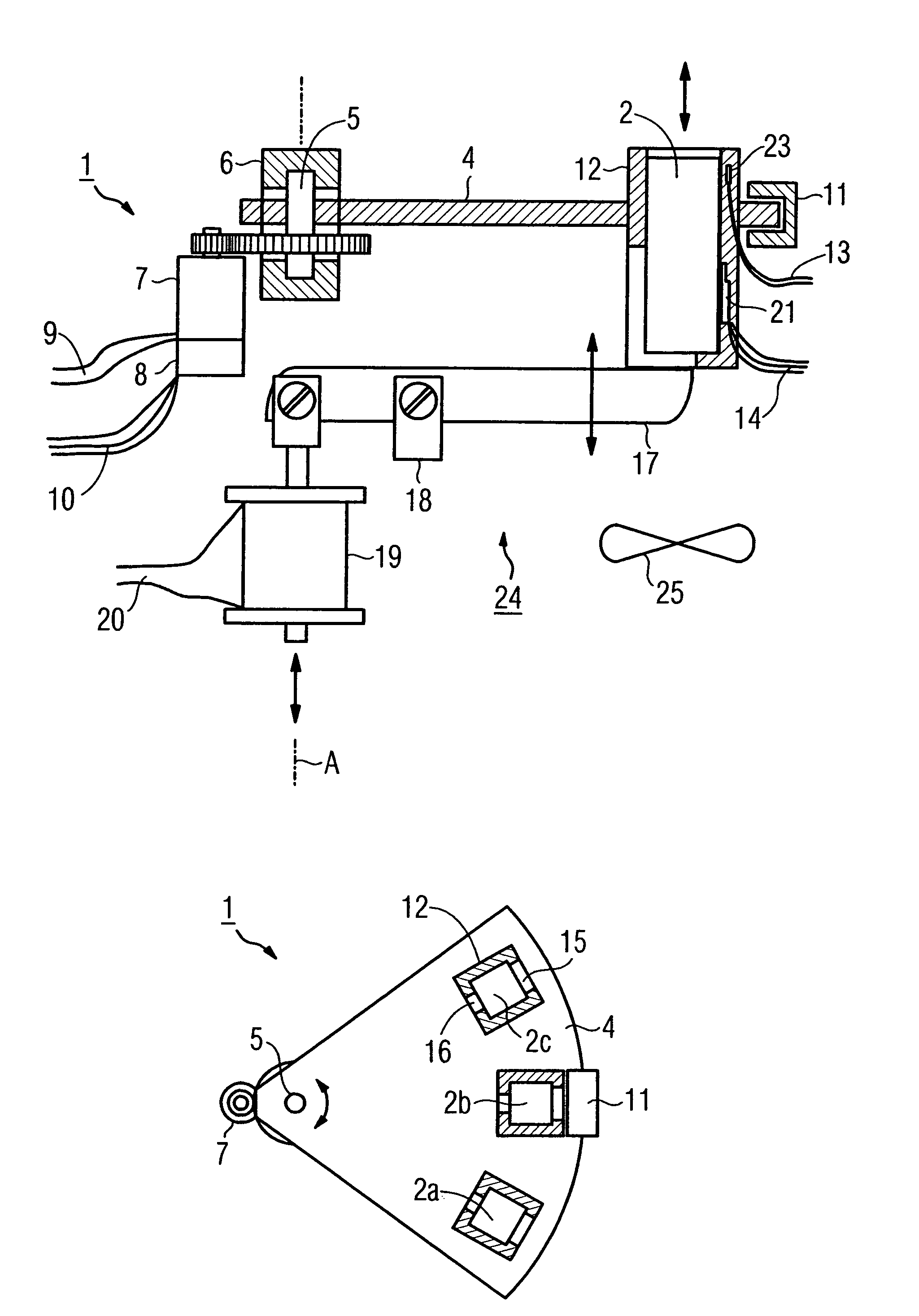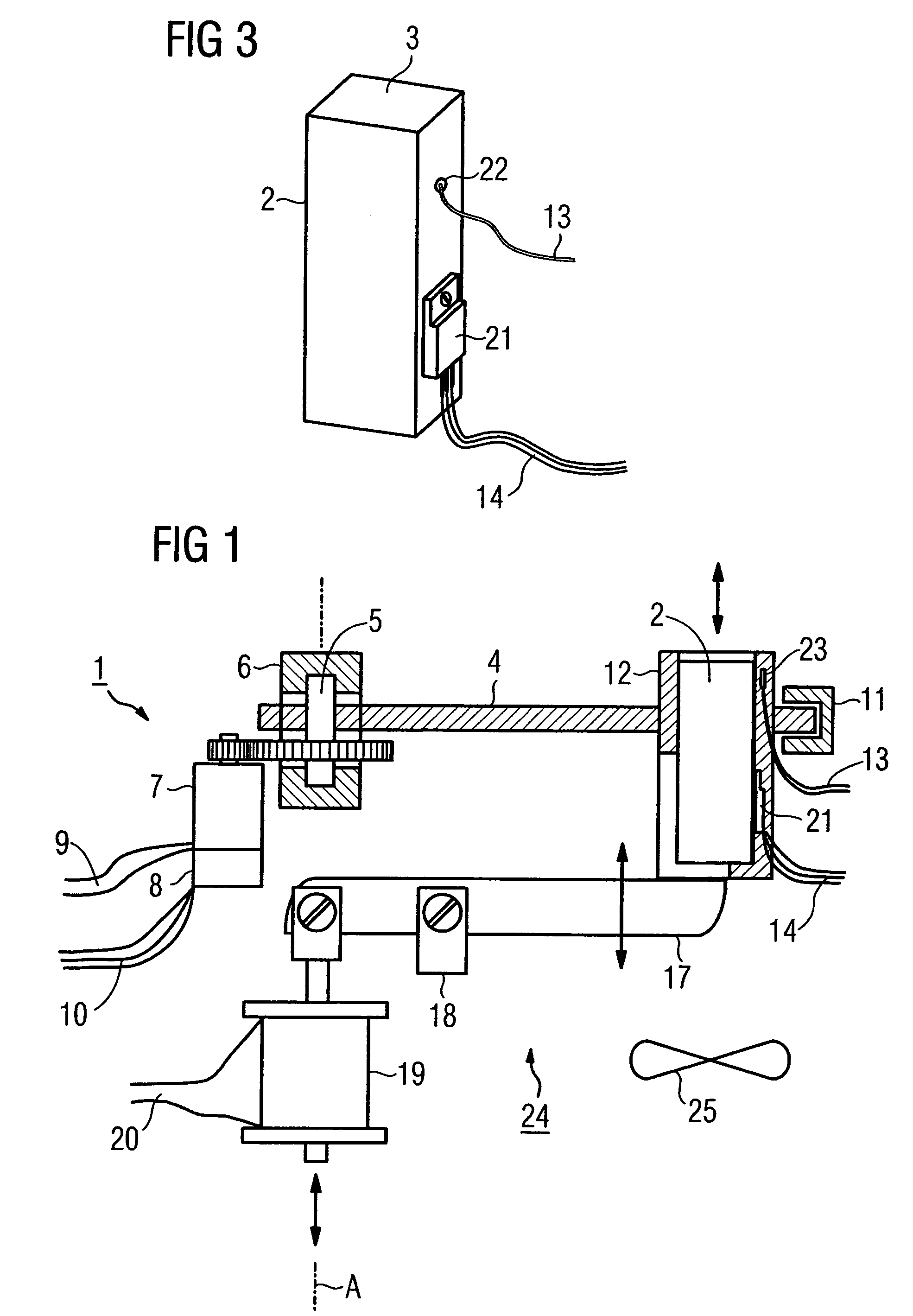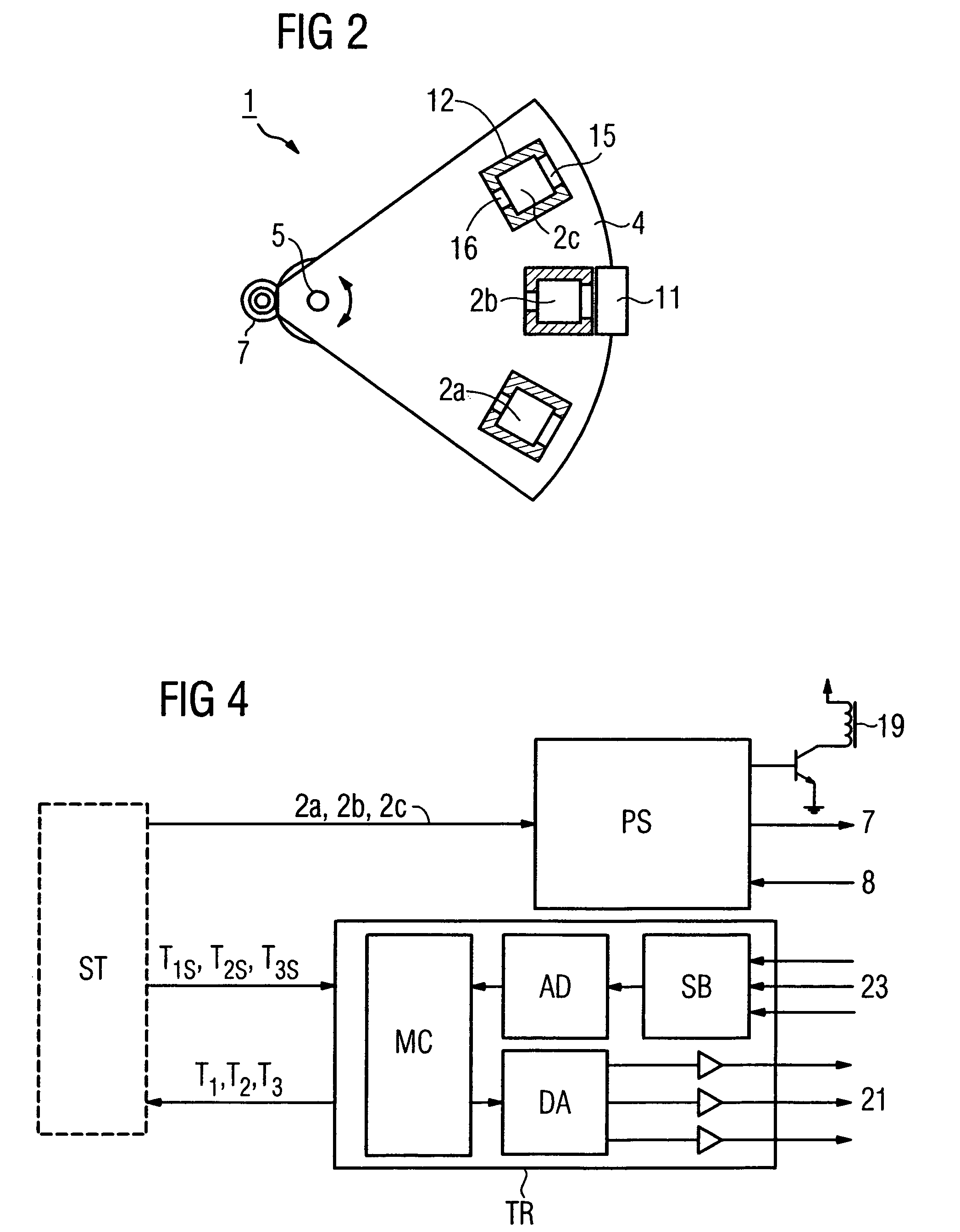Thermocycler
a technology of thermocycler and thermal cycler, which is applied in the direction of lighting and heating apparatus, instruments, furniture, etc., can solve the problems of reducing the heat transfer rate at the surface of the specimen holder, reducing the thermal capacity of the air in comparison to the liquid, and entail considerable time expenditure, so as to prevent the thermal overloading of the thermocycler components, improve process safety and reliability, and maintain the effect of substantially constan
- Summary
- Abstract
- Description
- Claims
- Application Information
AI Technical Summary
Benefits of technology
Problems solved by technology
Method used
Image
Examples
Embodiment Construction
[0025]A thermocycler 1 shown in simplified form in FIGS. 1 and 2 has three heating blocks 2; a first heating block 2a is intended for setting a temperature of 95° C., a second heating block 2b is intended for setting a temperature of 55° C., and a third heating block 2c is intended for setting a temperature of 72° C., in each case in a specimen holder, not shown, that is also known as a disposable cartridge. The specimen holder here is intended both for performing the polymerase chain reaction by means of the thermocycler and for further processing and analysis steps and is therefore larger than would be necessary for the polymerase chain reaction alone. A coupling face 3 of each heating block 2a, 2b, 2c has an area of 100 mm2 or greater, as shown in FIG. 3.
[0026]The heating blocks 2a, 2b, 2c are supported and operably displaceable, as indicated in FIG. 1, by double-headed arrows, in a support plate 4 approximately in the shape of a segment of a circle; the support plate 4 is pivota...
PUM
| Property | Measurement | Unit |
|---|---|---|
| area | aaaaa | aaaaa |
| temperatures | aaaaa | aaaaa |
| temperatures | aaaaa | aaaaa |
Abstract
Description
Claims
Application Information
 Login to View More
Login to View More - R&D
- Intellectual Property
- Life Sciences
- Materials
- Tech Scout
- Unparalleled Data Quality
- Higher Quality Content
- 60% Fewer Hallucinations
Browse by: Latest US Patents, China's latest patents, Technical Efficacy Thesaurus, Application Domain, Technology Topic, Popular Technical Reports.
© 2025 PatSnap. All rights reserved.Legal|Privacy policy|Modern Slavery Act Transparency Statement|Sitemap|About US| Contact US: help@patsnap.com



